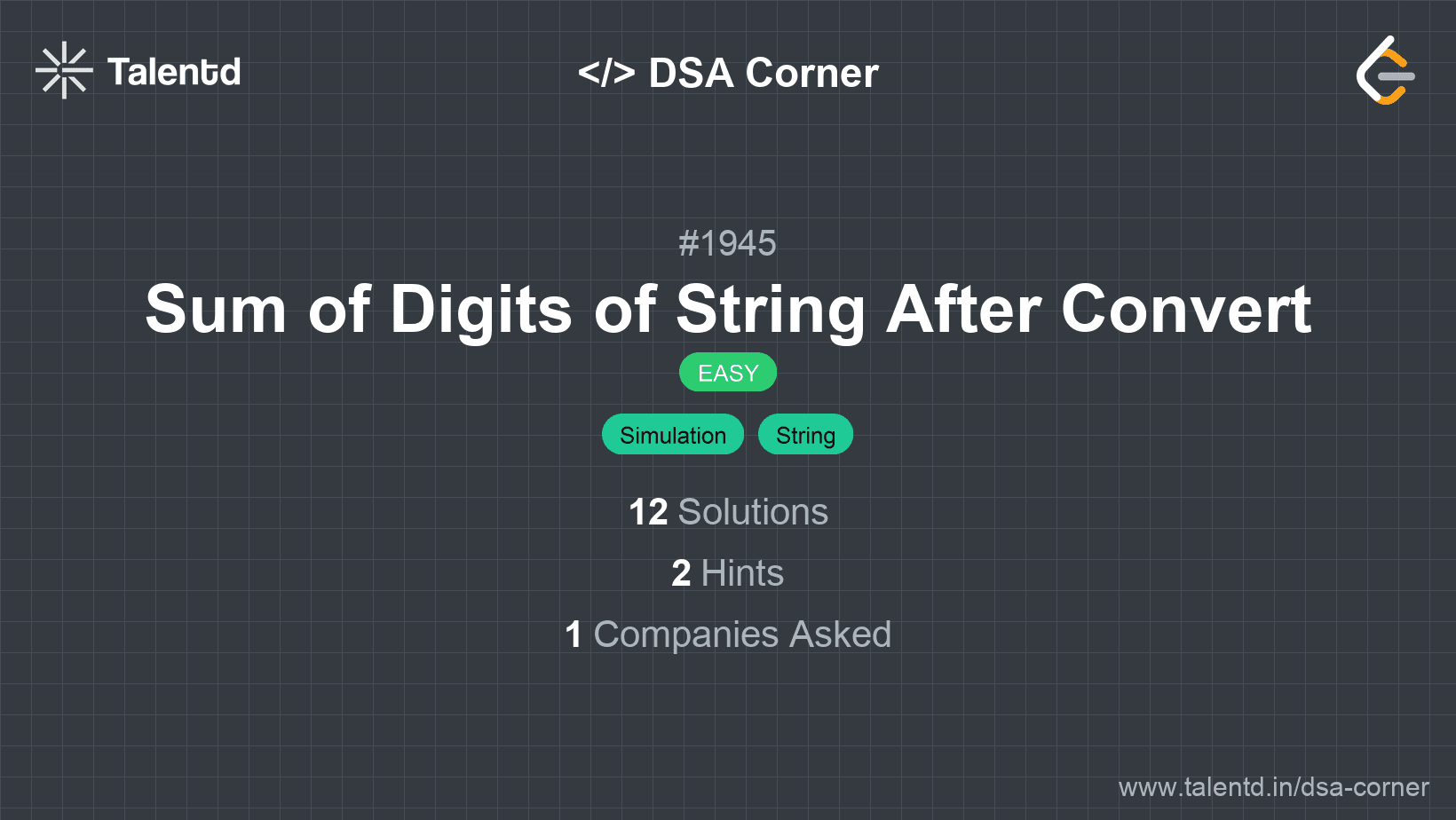
Sponsored
Sponsored
This approach involves converting each character to its corresponding position in the alphabet and forming a numeric string. We then sum the digits of this number 'k' times to get the resulting integer.
Time Complexity: O(N + kM), where N is the length of the string and M is the number of digits in the transformed number.
Space Complexity: O(M), as we store the transformed number as a string.
1function digitSum(num) {
2 return Array.from(num).reduce((acc, digit) => acc + parseInt(digit, 10), 0);
3}
4
5function sumOfDigitsAfterConvert(s, k) {
6 let num = Array.from(s).map(c => c.charCodeAt(0) - 'a'.charCodeAt(0) + 1).join('');
7
8 while (k-- > 0) {
9 num = digitSum(num).toString();
10 }
11
12 return parseInt(num, 10);
13}
14
15console.log(sumOfDigitsAfterConvert('zbax', 2));JavaScript uses charCodeAt() to convert characters to numeric values. The transformation through digit summation is executed iteratively as specified by k.
This approach directly calculates the digit sum during the conversion of the string to a number by aggregating the sum of each digit representation, reducing the need for intermediate large integer string handling.
Time Complexity: O(N + k*logM), where M is the intermediate sum value.
Space Complexity: O(1).
1#include <string>
using namespace std;
int sumOfDigitsAfterConvert(string s, int k) {
int sum = 0;
for (char c : s) {
int val = c - 'a' + 1;
while (val) {
sum += val % 10;
val /= 10;
}
}
for (int i = 1; i < k; i++) {
int newSum = 0;
while (sum) {
newSum += sum % 10;
sum /= 10;
}
sum = newSum;
}
return sum;
}
int main() {
cout << sumOfDigitsAfterConvert("zbax", 2) << endl;
return 0;
}The character value is directly converted and its digit sum is accumulated inline, reducing intermediate conversions. Repetitive sum calculations are efficient due to direct digit manipulation.